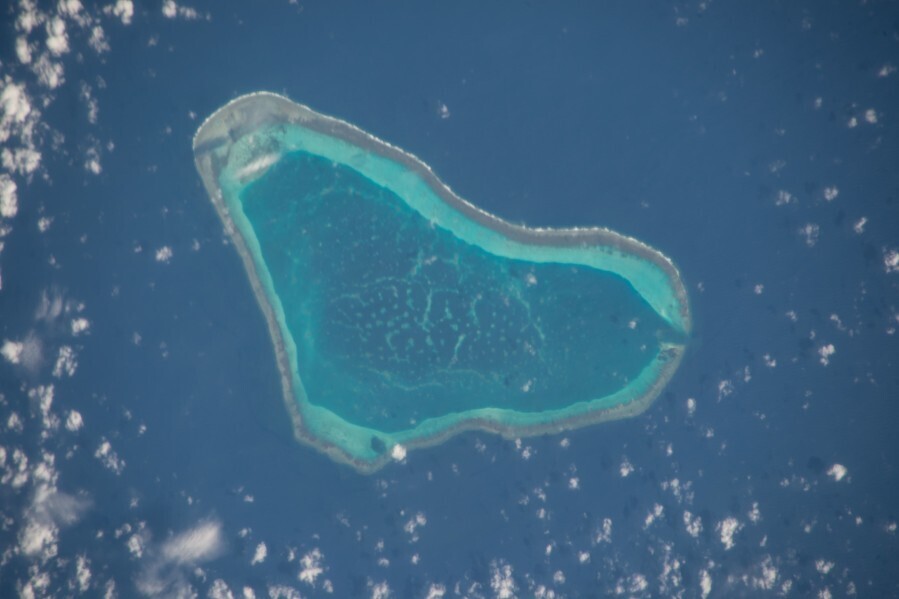The PLA's game of deterrence in the Taiwan Strait
Zaobao correspondent Yu Zeyuan notes the seeming aggressiveness of the PLA's large-scale military exercises in the South China Sea and Taiwan Strait, but says that the intention is in fact to prevent combat rather than to initiate it.

In a clear show of preparing for combat, over the past few days, the People's Liberation Army (PLA) of China has been conducting military exercises on both sides of the Taiwan Strait.
On 22 August, the Shandong Maritime Safety Administration released a notification of the PLA's large-scale live firing exercises in the Yellow Sea from 22 to 26 August, in the waters east of Qingdao to Lianyungang. Soon after, the Hainan Maritime Safety Administration also announced that from midnight on 24 August to midnight on 29 August, military training activities will be conducted in the waters southeast of Hainan island.
As for the PLA's late August exercises in the Yellow Sea and South China Sea, they seem to signal the intention of encircling Taiwan.
Over the past two months, China's military standoffs with the US and Taiwan have been escalating. The US army has been ramping up its intimidation of China, deploying military vessels including aircraft carriers to freely move in the Taiwan Strait and the South China Sea, and holding joint exercises with its allies like Australia and Japan in areas near the South China Sea. It has also sent various reconnaissance aircraft to carry out close-range surveillance on China, as well as B-1B bombers in the skies above the waters near to China.

China has responded with a series of large-scale exercises. Since the second half of July, the PLA has held live firing training in the waters around the Zhoushan Islands to the southeast and the Leizhou peninsula in the southwest, followed by joint exercises involving the navy and air force in the eastern, southern, and northern regions, deploying Chengdu J-10, Sukhoi Su-30, Xian H-6, Shaanxi KJ-200, and electronic-warfare aircraft in coordinated combat exercises, as well as live firing exercises by the East Sea Fleet in the East China Sea.
With the US army sending B-1B bombers to waters near China for intimidation, the destroyer USS Mustin passing westward through the Taiwan Strait, and frequent flights by surveillance aircraft over the South China Sea, the intent of these naval live firing exercises is clear.
As for the PLA's late August exercises in the Yellow Sea and South China Sea, they seem to signal the intention of encircling Taiwan.
Chinese military academic Wang Yunfei said the PLA's current exercises in the Yellow Sea are clearly different from the last two rounds. The current exercises are ones in response to events, while training generally means troop activities purely aimed at raising combat capabilities. With the US army sending B-1B bombers to waters near China for intimidation, the destroyer USS Mustin passing westward through the Taiwan Strait, and frequent flights by surveillance aircraft over the South China Sea, the intent of these naval live firing exercises is clear.
The PLA also emphasised that these are large-scale exercises, which means the involvement of powerful weapons e.g. long-range anti-aircraft or anti-vessel missiles or torpedoes. The main targets are large vessels such as aircraft carriers and destroyers, as well as B-1B and B-52H bombers.

At the same time, the live fire drills cover a large area, spanning over 200km from east to west, with a total area of over 30,000 square kilometres. In addition, while the previous two live shooting drills were conducted within territorial waters, the majority of this exercise is conducted outside territorial waters. The exercise is set against the backdrop of a large-scale battle, clearly targeting separatist activities with the goal of achieving unification.
Recently, the PLA's fighter jets have been frequently crossing the median line of the Taiwan Strait as well. According to a report from Taiwan's China Times, at 4pm on 20 August, PLA fighter jets crossed to the east of the median line and encircled Taiwan's air defence identification zone for 90 minutes.
Former deputy commander of the PLA's Nanjing military area command Wang Hongguang thinks that if the Taiwanese report is true, it would mark a major escalation of the mainland's military operations against Taiwan. The mainland would be using actual military operations to dispute the median line of the Taiwan Strait, and to push Taiwan military activities further back to the boundaries of their territorial waters.

Mainland China's bark worse than its bite?
Does the tense Taiwan Strait situation imply that China is about to use force against Taiwan? The answer is not a simple yes or no.
Subjectively speaking, the resolution of the Taiwan issue is not the priority of the Chinese leaders right now. Their top priority is to eradicate poverty and fulfil its goal of becoming a "moderately affluent society" (小康社会) by the end of this year.
Once China-US relations or the Taiwan Strait situation become uncontrollable to the point of a large-scale military confrontation, the above-mentioned goal would be compromised.
Currently, China urgently needs to do three major things: one, prevent a resurgence of the Covid-19 outbreak; two, comprehensively resume economic activities badly hit by the pandemic; and three, deal with the US's all-round pressure and ensure that China-US relations will not spin out of control.
Of these three things, resuming normal economic and social activities and striving for positive economic growth throughout the year is the most important one. Once China-US relations or the Taiwan Strait situation become uncontrollable to the point of a large-scale military confrontation, the above-mentioned goal would be compromised. Chinese leaders certainly do not wish to see this happening.
War has devastating effects - if a confrontation breaks out in the Taiwan Strait, no one can be held back anymore.

Thus, the PLA's military exercise that targets Taiwan and the US is not aimed at launching a unification by force. Rather, it hopes to stop the war by actively preparing for it, so as to prevent US-Taiwan collaborations from accelerating "Taiwan independence" activities, which would then force the mainland to use force to solve the Taiwan issue.
That said, a fundamental consensus between China and the US, and between both sides of the Taiwan Strait can no longer be found. All parties can only deter their opponents through toughened military means, which is dangerous in itself. War has devastating effects - if a confrontation breaks out in the Taiwan Strait, no one can be held back anymore.
While the mainland, the US, and Taiwan are reluctant to start a war in the Taiwan Strait, there is now an increased risk of the situation spinning out of control. The efforts of a single party is hardly enough to defuse the situation. All relevant parties have to put in effort to prevent it.
Related: Chinese military starts 79-day exercises amid pandemic to deter Taiwan and warn the US | Arm wrestling in silence: China-US military scorecard under the shadow of the pandemic | Why is Beijing flexing its military muscle over Taiwan airspace amidst the novel coronavirus crisis? | With American aircraft carriers paralysed, China's Liaoning leads drills around Taiwan | Only 17 people left in poverty | 600 million Chinese earn 1,000 RMB a month - so are the Chinese rich or poor?





